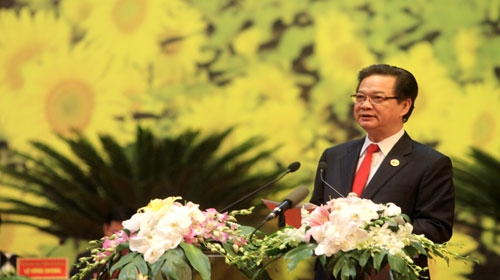The UN World Food Programme (WFP) said Monday it had suspended food distribution in a lawless Pakistani tribal district where a woman suicide bomber killed more than 40 people.
The Taliban claimed responsibility for Saturday's attack in Bajaur, one of Pakistan's seven semi-autonomous tribal districts bordering Afghanistan, in what was Pakistan's first known suicide attack carried out by a woman.
"WFP has temporarily suspended food distribution in Bajaur following the attack at a police checkpoint several hundred metres away from WFP's food distribution point," spokeswoman Jackie Dent told AFP.
"We are talking with the district authorities and hoping to resume the distribution as soon as possible."
"Our top priority is the safety and well-being of our beneficiaries and staff, and we are committed to continue assisting the people of the Federally Administered Tribal Areas as they work to rebuild their lives," Dent said.
WFP provides general food rations to approximately 294,000 internally displaced people in Bajaur, where the Pakistani military has been fighting against homegrown Taliban militants since August 2008.
So far this year, WFP has provided assistance to an estimated 2.6 million IDPs, returnees and local people in the northwest.
Zakir Hussain Afridi, the top administration official in Bajaur, said that hair, along with parts of hands and feet "leaves no doubt that the bomber was a woman".
Pakistan has claimed repeatedly to have eliminated the Islamist militant threat in Bajaur, part of the tribal belt that the United States considers the global headquarters of Al-Qaeda and among the most dangerous places on Earth.
Around 4,000 people have died in suicide and bomb attacks across Pakistan since government forces raided an extremist mosque in Islamabad in 2007. The attacks have been blamed on networks linked to the Taliban and Al-Qaeda.
The Taliban claimed responsibility for Saturday's attack in Bajaur, one of Pakistan's seven semi-autonomous tribal districts bordering Afghanistan, in what was Pakistan's first known suicide attack carried out by a woman.
"WFP has temporarily suspended food distribution in Bajaur following the attack at a police checkpoint several hundred metres away from WFP's food distribution point," spokeswoman Jackie Dent told AFP.
"We are talking with the district authorities and hoping to resume the distribution as soon as possible."
"Our top priority is the safety and well-being of our beneficiaries and staff, and we are committed to continue assisting the people of the Federally Administered Tribal Areas as they work to rebuild their lives," Dent said.
WFP provides general food rations to approximately 294,000 internally displaced people in Bajaur, where the Pakistani military has been fighting against homegrown Taliban militants since August 2008.
So far this year, WFP has provided assistance to an estimated 2.6 million IDPs, returnees and local people in the northwest.
Zakir Hussain Afridi, the top administration official in Bajaur, said that hair, along with parts of hands and feet "leaves no doubt that the bomber was a woman".
Pakistan has claimed repeatedly to have eliminated the Islamist militant threat in Bajaur, part of the tribal belt that the United States considers the global headquarters of Al-Qaeda and among the most dangerous places on Earth.
Around 4,000 people have died in suicide and bomb attacks across Pakistan since government forces raided an extremist mosque in Islamabad in 2007. The attacks have been blamed on networks linked to the Taliban and Al-Qaeda.


 Compared to the same period last year, the number of traffic-related deaths is also down (788 deaths or an 8% decrease) with 404 injuries (9.8% decrease).
Compared to the same period last year, the number of traffic-related deaths is also down (788 deaths or an 8% decrease) with 404 injuries (9.8% decrease).



 Thanh Minh, 38, who lives in Hanoi, has to check the dollar price every day, because he wants to purchase dollars to pay his debts. Minh bought a car earlier this year on the installment plan. Since the car’s price was in dollars, it has become more expensive because of the steady dollar increase. Minh has decided to pay debts right now, or else he will not be able to pay debts if the increase continues.
Thanh Minh, 38, who lives in Hanoi, has to check the dollar price every day, because he wants to purchase dollars to pay his debts. Minh bought a car earlier this year on the installment plan. Since the car’s price was in dollars, it has become more expensive because of the steady dollar increase. Minh has decided to pay debts right now, or else he will not be able to pay debts if the increase continues.